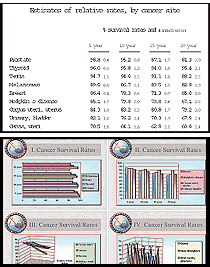PowerPoint haters party created in Switzerland
 If you think that sitting at a presentation is a boring and useless exercise, you are not alone. Millions of people think the same way. And now they have the opportunity to unite. Swiss activists have organized a political party Anti-PowerPoint Party (APPP) - an international movement designed to rally everyone who is ready to fight the devilish PowerPoint program.
If you think that sitting at a presentation is a boring and useless exercise, you are not alone. Millions of people think the same way. And now they have the opportunity to unite. Swiss activists have organized a political party Anti-PowerPoint Party (APPP) - an international movement designed to rally everyone who is ready to fight the devilish PowerPoint program.A serious question. PowerPoint not only harms the mental health of office workers, but also causes serious damage to the economy. According to rough estimates by APPP, in small Switzerland alone, the damage from wasted time is 2.1 billion francs (€ 1.75 billion) per year, and for all European countries this figure rises to € 110 billion. (The calculation is based on a bold assumption that 85% of the time for the presentation participants is wasted) .
The Swiss political system allows any citizen to initiate a national referendum on any topic, if he collects 100,000 signatures for the referendum. APPP intends to do this and put to the vote the question of banning the use of PowerPoint and any other presentation software in Switzerland. In addition, the party intends to nominate its candidate in the national elections in October.
As the experience of the Pirate Party of Sweden has shown, modern voters really care about such issues. Recall that this party held its candidates for the national parliament and even the European Parliament. So APPP can theoretically count on support among advanced youth and intellectual workers. But in practice, from May 5, only 245 people signed up for the party.
')
The founder and president of the party is Matthias Poehm, who has personal reasons for not liking PowerPoint. He earns his living by teaching oratorical skills and he most likely sincerely hates the program that
 It should be added that Mattias Poem is far from being the first to talk about the dangers of PowerPoint. In 2003, the well-known expert in information design, Edward Tufti, published an essay “Cognitive style of PowerPoint”, in which he explained in a popular way why the manner in which data was submitted to PowerPoint prevents a person from perceiving information. The illustrations on the right show a typical example of presenting the same information. According to Tufti, the first option is much easier to perceive.
It should be added that Mattias Poem is far from being the first to talk about the dangers of PowerPoint. In 2003, the well-known expert in information design, Edward Tufti, published an essay “Cognitive style of PowerPoint”, in which he explained in a popular way why the manner in which data was submitted to PowerPoint prevents a person from perceiving information. The illustrations on the right show a typical example of presenting the same information. According to Tufti, the first option is much easier to perceive.In 2010, even individual generals of the US Army came out against PowerPoint . It turns out that recent slides have been extremely widely used in meetings on strategic planning and NATO military operations. Critics from among military officers are strongly opposed. They say that PowerPoint can somehow be used normally only for displaying maps and diagrams. Otherwise, even a 30-page presentation contains less information than a 5-page text, not to mention the fact that a full and in-depth analysis of the situation can be done in the text, and in graphical form it is simply impossible: something completely unsuitable for perception . For example, here’s a slide from a real PowerPoint presentation that shows all aspects of US strategy in Afghanistan (2009).

PowerPoint presentations are well suited for only one task, and in this the army officers agree. For press conferences. A typical military press conference lasts 25 minutes, where only 5 minutes is intended to answer questions. The rest of the time is taken by the presentation, which in the army is called “hypnosis of chickens”.
Source: https://habr.com/ru/post/123581/
All Articles